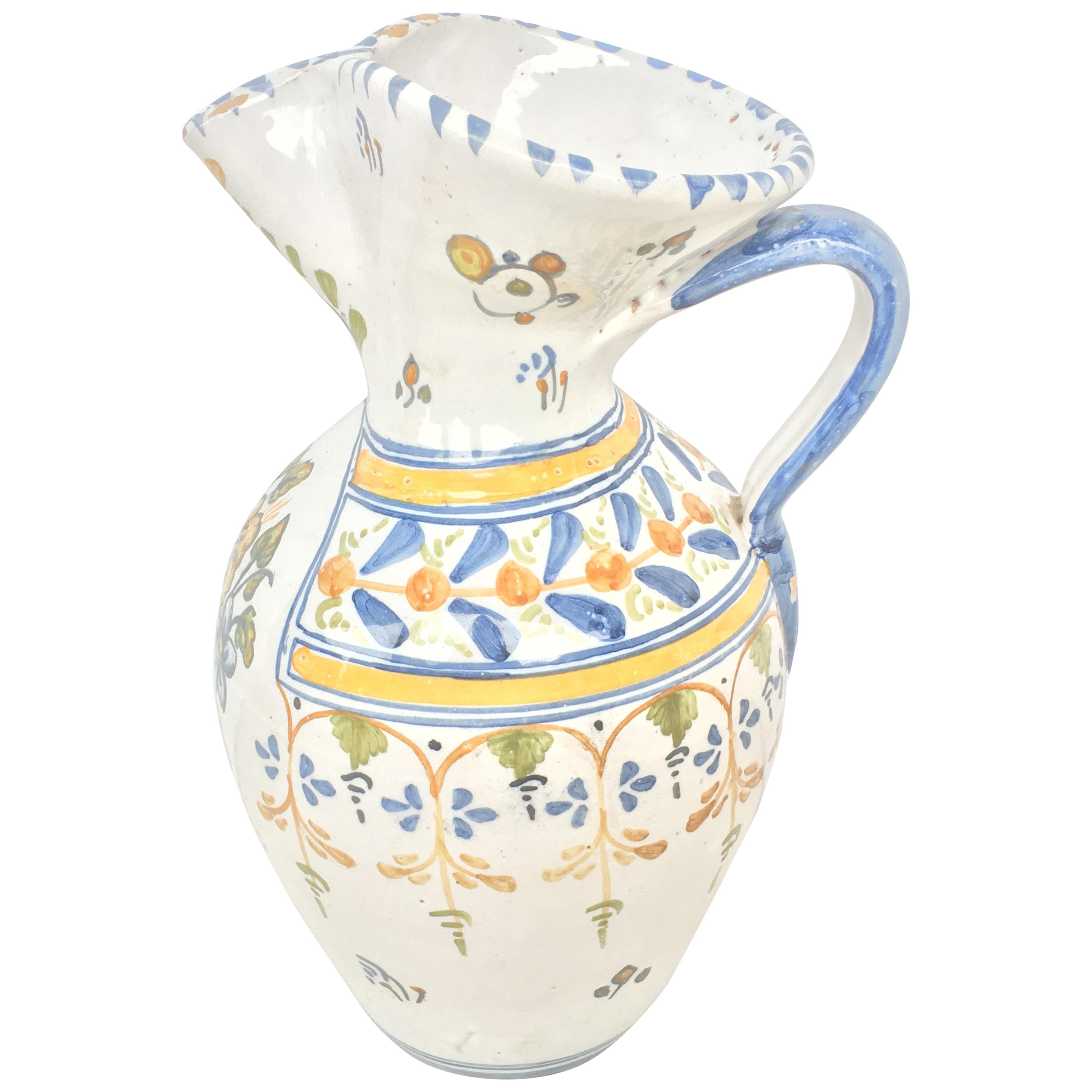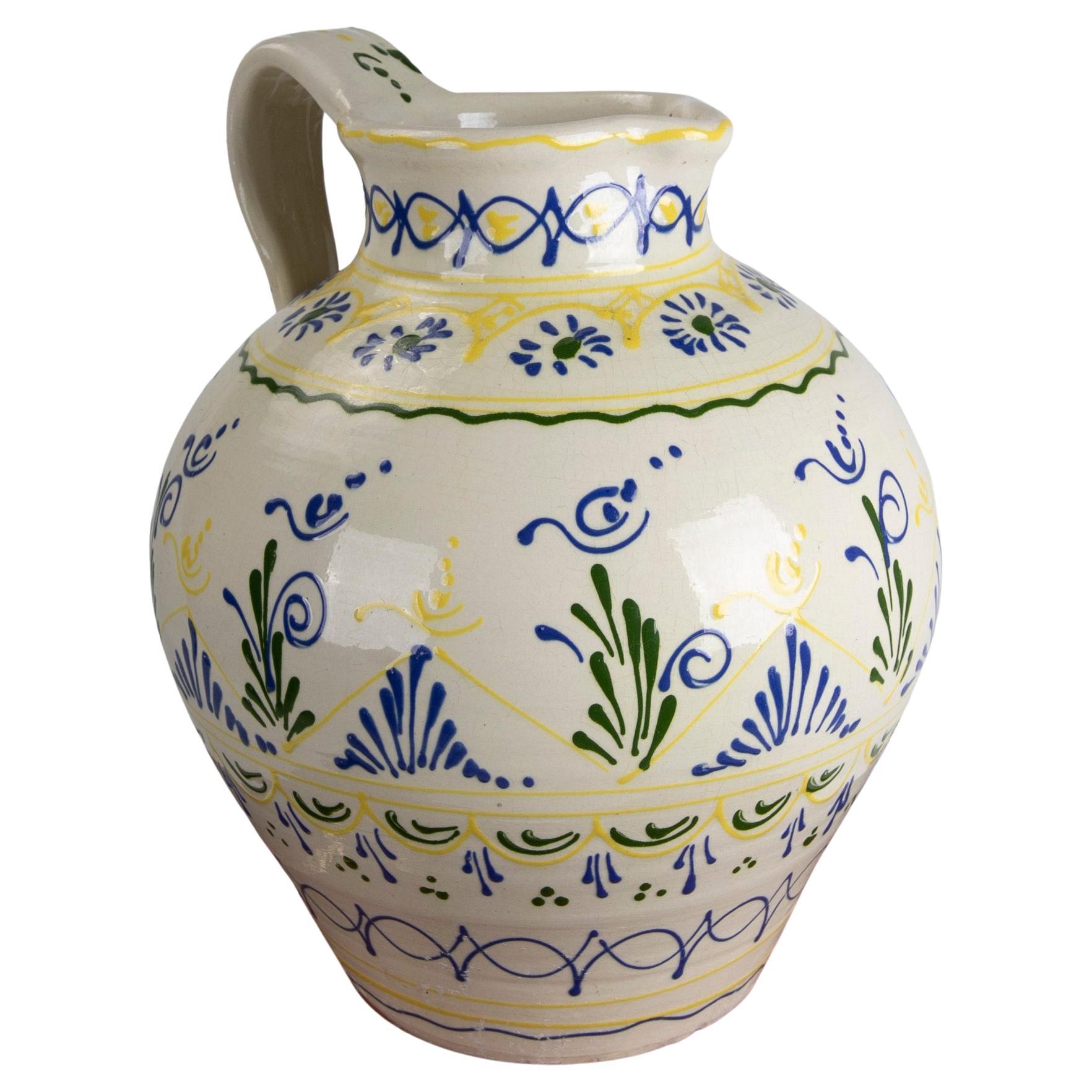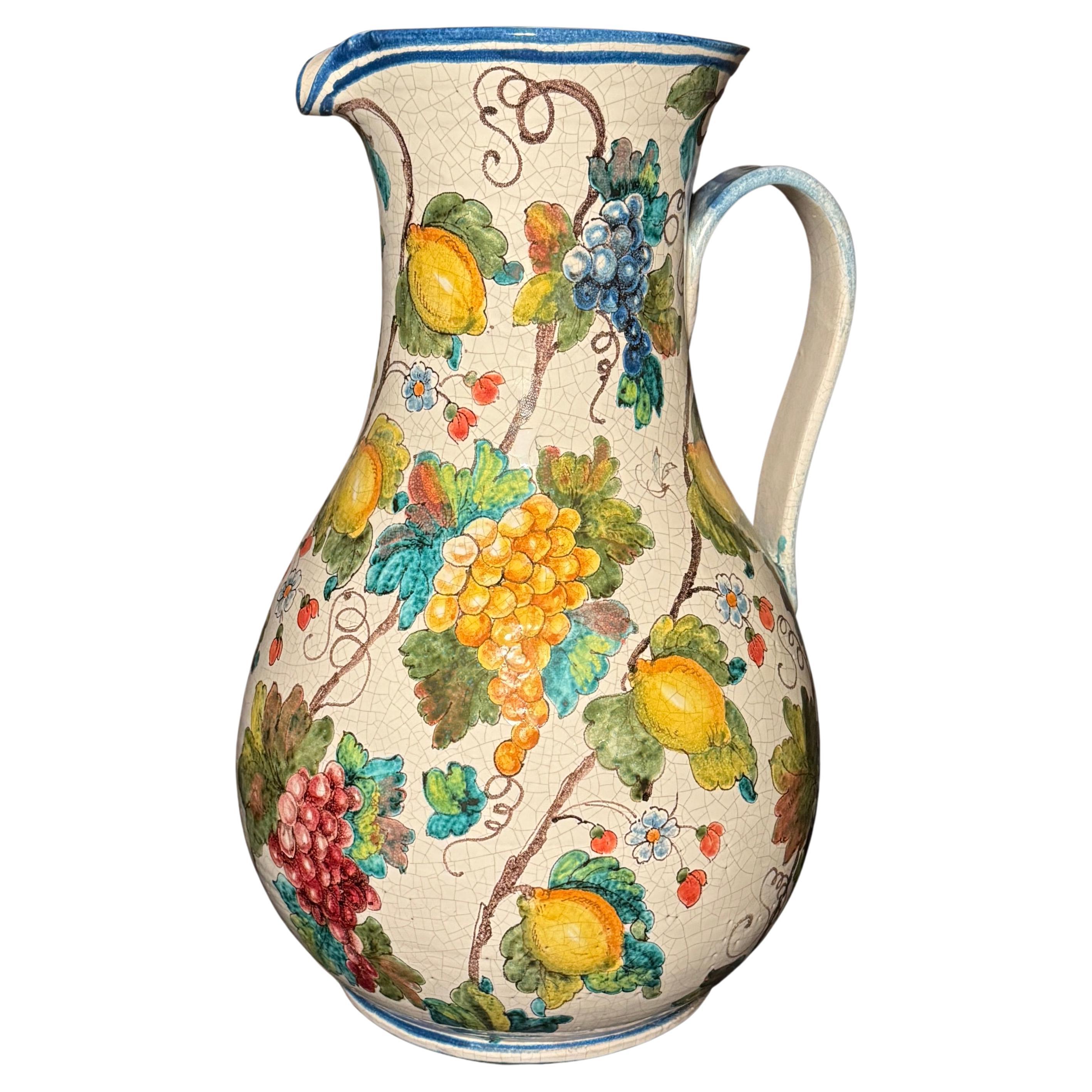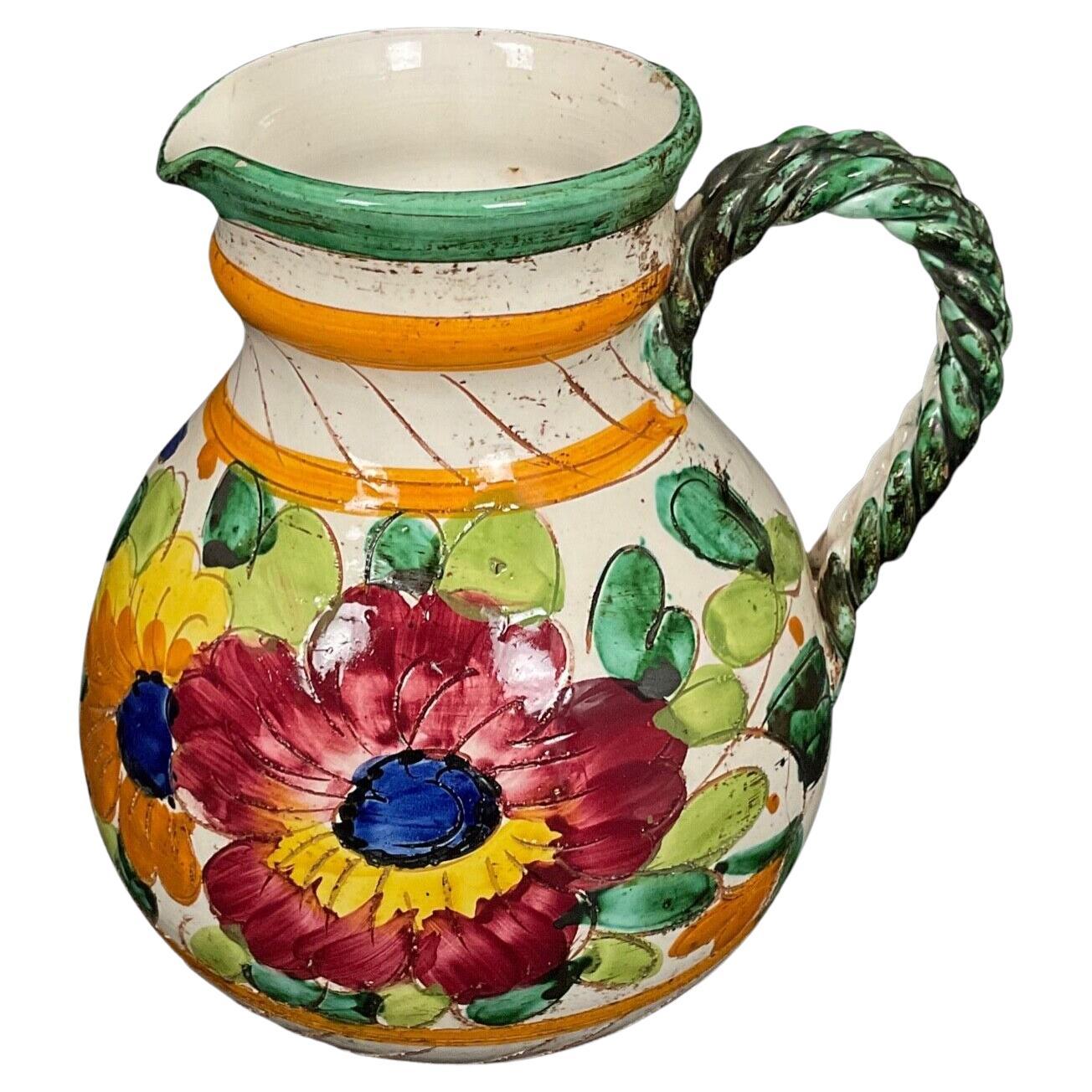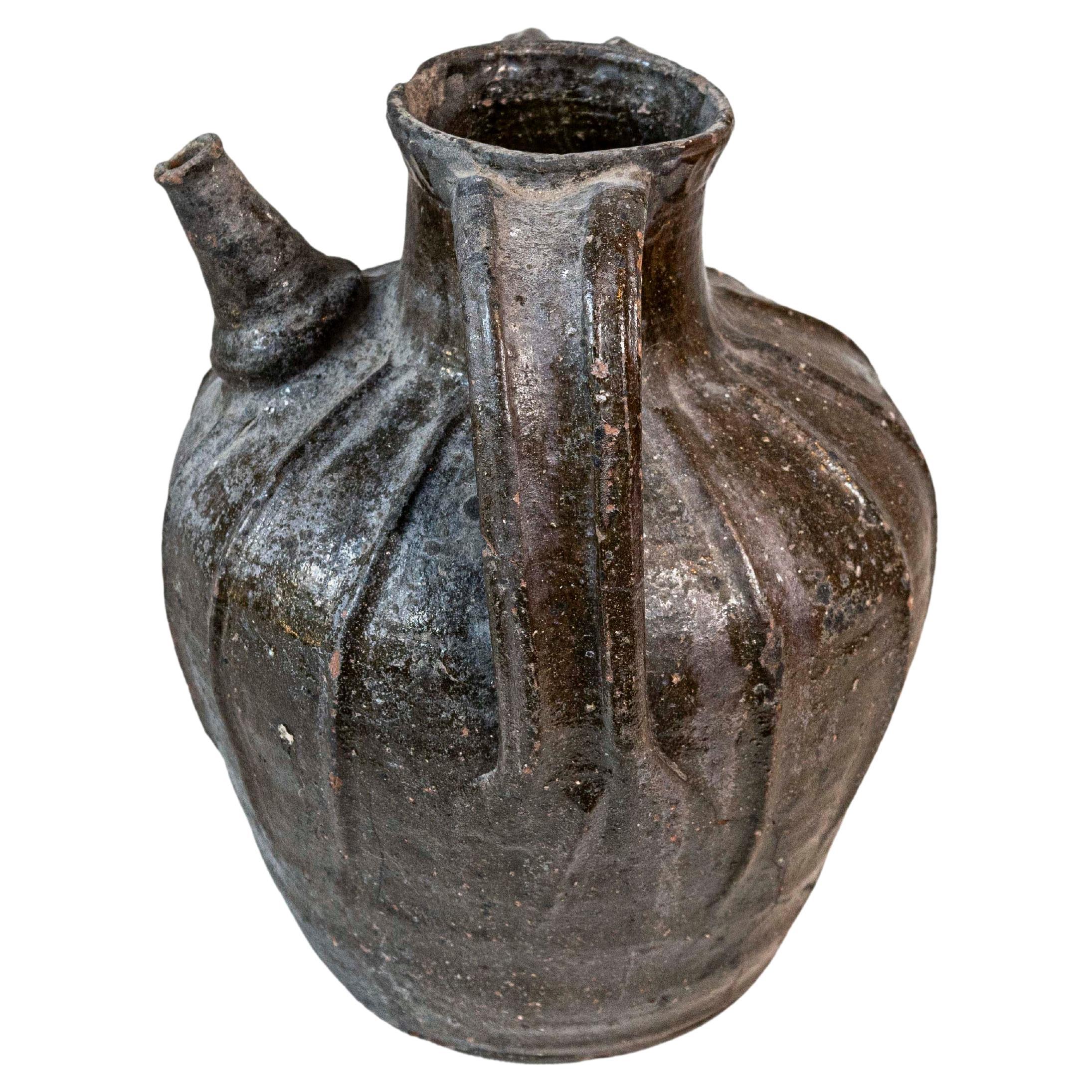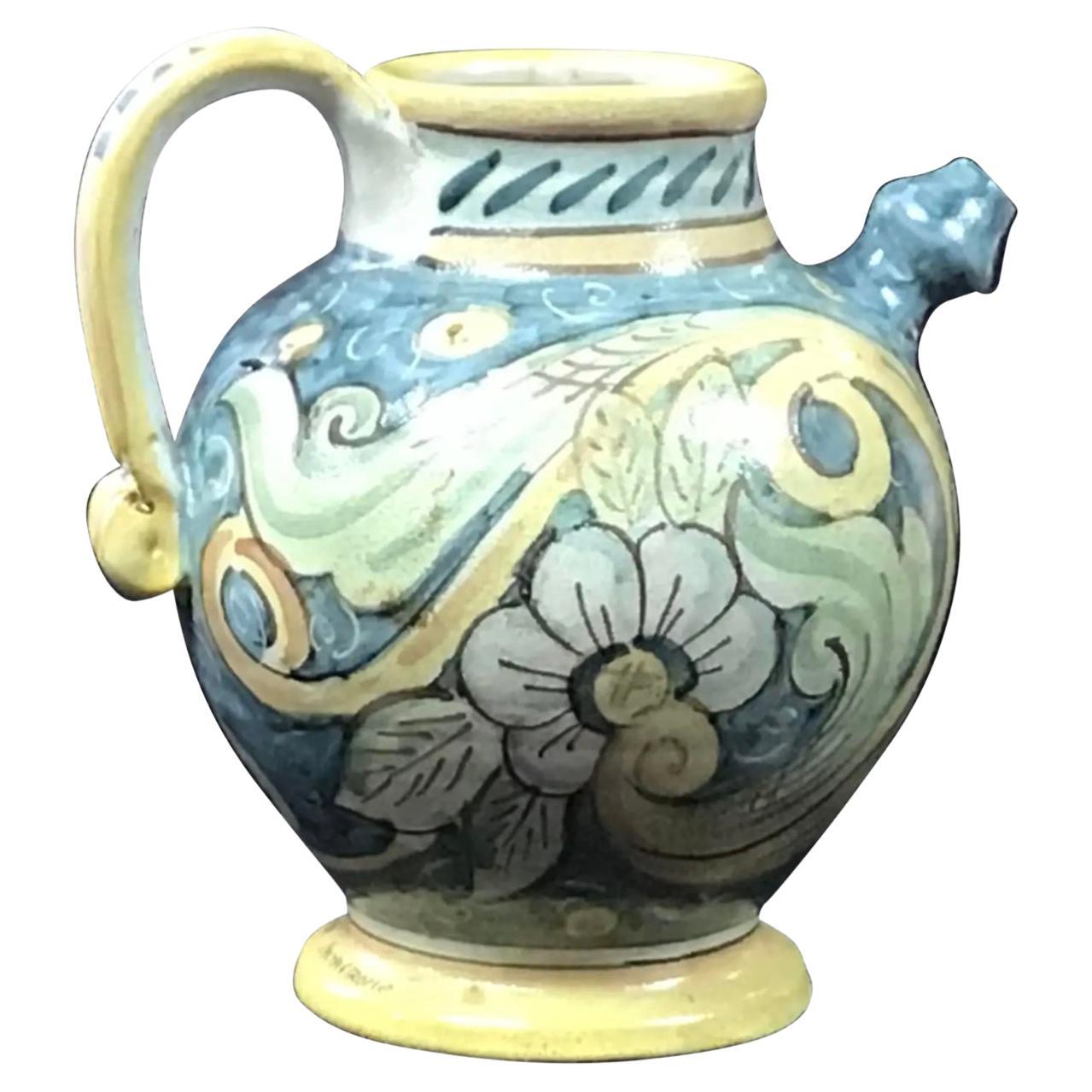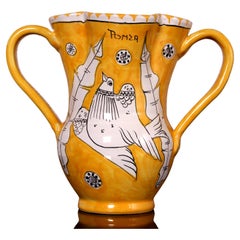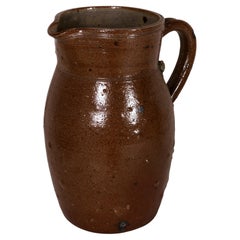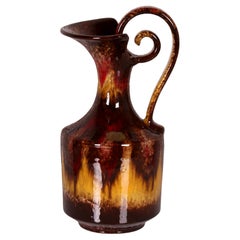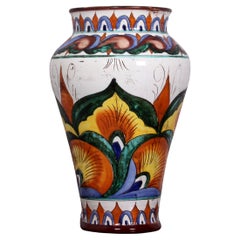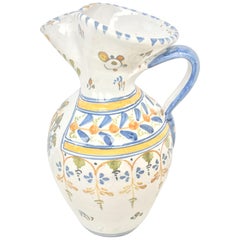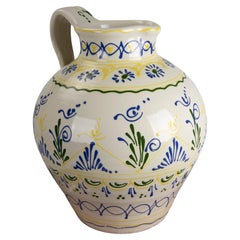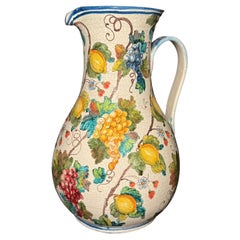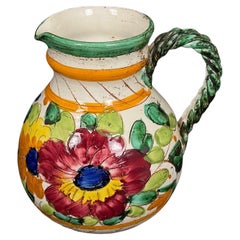Items Similar to SET of 2 traditional Italian Jugs GUBBIO floral handpainted Jug Wine Pitcher
Want more images or videos?
Request additional images or videos from the seller
1 of 21
SET of 2 traditional Italian Jugs GUBBIO floral handpainted Jug Wine Pitcher
$458.63
$764.3940% Off
£341.02
£568.3740% Off
€384
€64040% Off
CA$644.17
CA$1,073.6240% Off
A$709.19
A$1,181.9840% Off
CHF 362.47
CHF 604.1140% Off
MX$8,464.34
MX$14,107.2440% Off
NOK 4,614.98
NOK 7,691.6440% Off
SEK 4,318.59
SEK 7,197.6640% Off
DKK 2,925.62
DKK 4,876.0440% Off
About the Item
Design Period 1955 to 1965
Production Period around 1960
Country of Manufacture Italy Gubbio Umbria (Provincia di Perugia)
MARKED: by artist C.A.F.F. Gubbio
:-:very good condition
Wine Pitcher: 29cm high ~ Milk or Water Jug: 12cm high
To ensure a safe arrival, this item is packed in super-safe giant packaging.
(up to 10 Kg)
The ceramics of Gubbio
Some documents from the archives of Gubbio date the work of the ceramic masters back to the year 1300.
The medieval testimonies show an ancient majolica with geometric decorations or plant motifs in green and brown. The fame of the city's ceramics is closely linked to the ceramic master Giorgio Andreoli, known as Mastro Giorgio, who came to Gubbio in 1489. He came from Intra on Lake Maggiore. The art of using brilliant colours, which Master Giorgio undoubtedly mastered best, made Iguinese ceramics famous: gold, silver, green, but above all a deep ruby red.
It was precisely this shade of red that the great master introduced as an innovation, distinguishing his ceramics from those of Deruta, which, in the same years, emphasised the two-tone colour scheme with blue and gold. Plates, albarelli, bowls and vases are creations of Giorgio Andreoli's workshop, but the short-footed plate became the predominant object of his production around 1530. In addition to the colours orange, blue, yellow and green, the new technique was used for the 'istruciato' painting and for many other decorations (arabesques, palm trees, grotesques, trophies and garlands). After a long period of recession, ceramic production resumed in the second half of the 19th century as part of a cultural movement that swept through Umbria with the aim of reviving this Renaissance tradition.
The first experiences of Aldo Ajó, whose style was followed by pupils and imitators, Baffoni, Cavicchi, Faravelli, Monarchi, Notari, the Rossi brothers..., date back to the beginning of the 20th century. In addition to the production of Riverbero majolica, the Iguinese ceramists also followed other paths, such as the production of buccheri, first glazed and then engraved or decorated with polychrome enamel or gold, or ceramics inspired by the Middle Ages, in which the colour cobalt blue predominates.
- Creator:C.A.M. Gubbio (Maker)
- Dimensions:Height: 11.42 in (29 cm)Diameter: 7.88 in (20 cm)
- Style:Rustic (Of the Period)
- Materials and Techniques:
- Place of Origin:
- Period:
- Date of Manufacture:1955-1965
- Condition:
- Seller Location:Landshut, DE
- Reference Number:1stDibs: LU8587241837602
About the Seller
5.0
Vetted Professional Seller
Every seller passes strict standards for authenticity and reliability
1stDibs seller since 2023
22 sales on 1stDibs
Typical response time: 7 hours
- ShippingRetrieving quote...Shipping from: Bodenkirchen , Germany
- Return Policy
Authenticity Guarantee
In the unlikely event there’s an issue with an item’s authenticity, contact us within 1 year for a full refund. DetailsMoney-Back Guarantee
If your item is not as described, is damaged in transit, or does not arrive, contact us within 7 days for a full refund. Details24-Hour Cancellation
You have a 24-hour grace period in which to reconsider your purchase, with no questions asked.Vetted Professional Sellers
Our world-class sellers must adhere to strict standards for service and quality, maintaining the integrity of our listings.Price-Match Guarantee
If you find that a seller listed the same item for a lower price elsewhere, we’ll match it.Trusted Global Delivery
Our best-in-class carrier network provides specialized shipping options worldwide, including custom delivery.More From This Seller
View Allone of a kind Ceramica PONZA Italy Wine Pitcher Jug Vallauris Picasso Style 60s
Located in Landshut, BY
one of a kind...
Ceramica PONZA Italy
Wine Pitcher
Jug Vallauris Picasso Style 1950s / 1960s
Ø 16cm ~ Ø max 24cm ~ weight: 1178grs
Ponza is one ...
Category
Mid-20th Century German Mid-Century Modern Jars
Materials
Pottery
huge hand made archaic JUG Gritstone Portugal 1970s JAR Pitcher
Located in Landshut, BY
huge hand made archaic JUG Gritstone Portugal 1970s
Category
Vintage 1970s Portuguese Art Deco Ceramics
Materials
Stoneware
$267 Sale Price
41% Off
a quite unique art pottery vase Italy 1970s (appears to be composed of glass ! )
Located in Landshut, BY
This is an exceptional example of Italian design and craftsmanship.
The jug-style vase with a handle initially appears to be composed of glass. Upon closer examination, it becomes ...
Category
Vintage 1970s Italian Mid-Century Modern Vases
Materials
Pottery
$496 Sale Price
20% Off
Art Nouveau Southern French Fayance art pottery FLOOR VASE rare colours&pattern
Located in Landshut, BY
A giving joy beautiful French Fayence Floor Vase
fantastic Art Nouveau pattern - Impressing Colours
Manufacturer unknown - marked
Design Period 1915 - 1925
Country of Manufacture : France
H / height: 46 cm ~ Gew. / weight: 4550 grs
DM / diameter max: 28 cm ~ DM oben / diameter inner rim: 19.8 cm
.... an ode to Southern France
A Legend of Provence
by Adelaide Anne Procter (30 October 1825 – 2 February 1864)
The lights extinguished, by the hearth I leant,
Half weary with a listless discontent.
The flickering giant-shadows, gathering near,
Closed round me with a dim and silent fear.
All dull, all dark; save when the leaping flame,
Glancing, lit up a Picture's ancient frame.
Above the hearth it hung. Perhaps the night,
My foolish tremors, or the gleaming light,
Lent power to that Portrait dark and quaint, —
A Portrait such as Rembrandt loved to paint, —
The likeness of a Nun. I seemed to trace
A world of sorrow in the patient face,
In the thin hands folded across her breast: —
Its own and the room's shadow hid the rest.
I gazed and dreamed, and the dull embers stirred,
Till an old legend that I once had heard
Came back to me; linked to the mystic gloom
Of that dark Picture in the ghostly room.
In the far south, where clustering vines are hung;
Where first the old chivalric lays were sung;
Where earliest smiled that gracious child of France,
Angel and knight and fairy, called Romance,
I stood one day. The warm blue June was spread
Upon the earth; blue summer overhead,
Without a cloud to fleck its radiant glare,
Without a breath to stir its sultry air.
All still, all silent, save the sobbing rush
Of rippling waves, that lapsed in silver hush
Upon the beach; where, glittering towards the strand
The purple Mediterranean kissed the land.
All still, all peaceful; when a convent chime
Broke on the mid-day silence for a time,
Then trembling into quiet, seemed to cease,
In deeper silence and more utter peace.
So as I turned to gaze, where gleaming white,
Half hid by shadowy trees from passers' sight,
The Convent lay, one who had dwelt for long
In that fair home of ancient tale and song,
Who knew the story of each cave and hill,
And every haunting fancy lingering still
Within the land, spake thus to me, and told
The Convent's treasured Legend, quaint and old: —
Long years ago, a dense and flowering wood,
Still more concealed where the white convent stood,
Borne on its perfumed wings the title came:
" Our Lady of the Hawthorns " is its name.
Then did that bell, which still rings out to-day,
Bid all the country rise, or eat, or pray.
Before that convent shrine, the haughty knight
Passed the lone vigil of his perilous fight;
For humbler cottage strife or village brawl,
The Abbess listened, prayed, and settled all.
Young hearts that came, weighed down by love or wrong,
Left her kind presence comforted and strong.
Each passing pilgrim, and each beggar's right
Was food, and rest, and shelter for the night.
But, more than this, the Nuns could well impart
The deepest mysteries of the healing art;
Their store of herbs and simples was renowned,
And held in wondering faith for miles around.
Thus strife, love, sorrow, good and evil fate,
Found help and blessing at the convent gate.
Of all the nuns, no heart was half so light,
No eyelids veiling glances half as bright,
No step that glided with such noiseless feet,
No face that looked so tender or so sweet,
No voice that rose in choir so pure, so clear,
No heart to all the others half so dear,
So surely touched by others' pain or woe,
(Guessing the grief her young life could not know,)
No soul in childlike faith so undefiled,
As Sister Angela's, the " Convent Child. "
For thus they loved to call her. She had known
No home, no love, no kindred, save their own.
An orphan, to their tender nursing given,
Child, plaything, pupil, now the Bride of Heaven
And she it was who trimmed the lamp's red light
That swung before the altar, day and night;
Her hands it was whose patient skill could trace
The finest broidery, weave the costliest lace;
But most of all, her first and dearest care,
The office she would never miss or share,
Was every day to weave fresh garlands sweet,
To place before the shrine at Mary's feet.
Nature is bounteous in that region fair,
For even winter has her blossoms there.
Thus Angela loved to count each feast the best,
By telling with what flowers the shrine was dressed.
In pomp supreme the countless Roses passed,
Battalion on battalion thronging fast,
Each with a different banner, flaming bright,
Damask, or striped, or crimson, pink, or white,
Until they bowed before a newborn queen,
And the pure virgin Lily rose serene.
Though Angela always thought the Mother blest
Must love the time of her own hawthorn best,
Each evening through the years, with equal care,
She placed her flowers; then kneeling down in prayer,
As their faint perfume rose before the shrine,
So rose her thoughts, as pure and as divine.
She knelt until the shades grew dim without,
Till one by one the altar lights...
Category
Vintage 1910s French Art Nouveau Vases
Materials
Pottery
$1,891 Sale Price
36% Off
1950s Studio Keramik floor Vase series GARDA Atelier Huber Roethe Landshut
Located in Landshut, BY
STUDIO KERAMIK FLOOR VASE
Atelier Herta Huber Roethe Landshut 1950s
marked "HR"
Manufacturer ATELIER HUBER ROETHE
Design Period 1950 to 1959
Production Period 1950 to 1959
Count...
Category
Vintage 1950s German Mid-Century Modern Vases
Materials
Pottery
traditional Italian art pottery floor vase floral midcentury classic white&blue
Located in Landshut, BY
beautiful Italian art pottery floor vase
floral pattern
Manufacturer unknown
Design Period 1958 to 1968
Production Period 1958 to 1968
Country of Manufacture Italy
H / height: ...
Category
Vintage 1960s Italian Arts and Crafts Vases
Materials
Pottery
$439 Sale Price
57% Off
You May Also Like
19th Century Glazed Earthenware Talavera Floral Painted Pitcher
Located in Miami, FL
A striking Spanish glazed earthenware handled yellow, green and blue painted pitcher, the body underglaze floral decorated
Talavera de la Reina pottery is a craft made in Talaver...
Category
Mid-20th Century Spanish Spanish Colonial Vases
Materials
Ceramic
1980s Spanish Hand-Painted Ceramic Jug with Handle for Wine
Located in Marbella, ES
1980s Spanish Hand-Painted ceramic jug with handle for wine.
Category
Late 20th Century Spanish Jars
Materials
Ceramic
Monumental Italian Majolica Paint Decorated Pitcher
Located in Norwood, NJ
Very large Italian majolica ceramic pitcher by Armando Poggi, Florence, Italy. Hand paint decorated with colorful grapes on vines along with large plump lemons. A beautiful decoratio...
Category
20th Century Italian Urns
Materials
Ceramic, Earthenware, Majolica
Vintage 20th Century Ceramic Pitcher – Floral Design - 2Y517
Located in Bordeaux, FR
This vintage 20th-century ceramic pitcher with a floral design is a graceful and versatile decorative piece. Measuring 7.3 inches (18.5 cm) in height and 5.7 inches (14.5 cm) in diam...
Category
20th Century Antiquities
Materials
Ceramic
French Provincial 19th Century Glazed Pottery Pouring Jug with Two Handles
Located in Atlanta, GA
A French Provincial glazed pottery pouring jug from the 19th century, with single spout, two handles and great rustic character. Created in southern France during the 19th century, t...
Category
Antique 19th Century French French Provincial Jars
Materials
Pottery
Italian Albarello Jar, hand painted Italian Jug, Majolica
Located in Bradenton, FL
An impressively formed antique hand painted Italian Faenza Majolica ceramic vessel. Made in the early 1900s. The jug is decorated with colorful floral ...
Category
Early 20th Century Italian Neoclassical Jars
Materials
Majolica
More Ways To Browse
Brown Jugs
Decorative Jug
Hand Painted Jugs
Vintage Brown Jug
Italian Jug
Blue And Gold Plates
Italian Floral Painting 20th Century
Italian Renaissance Dining Room Sets
Italian Maiolica
Wine Jugs
Italy Vase Midcentury Orange Ceramic
Milk Pitcher
Floral Jug
Italian Floral Vase
Midcentury Italian Ceramic Vase Pitcher
Used Traditional Dining Room Sets
19th Century Rustic Italian Ceramics
Majolica Plant
